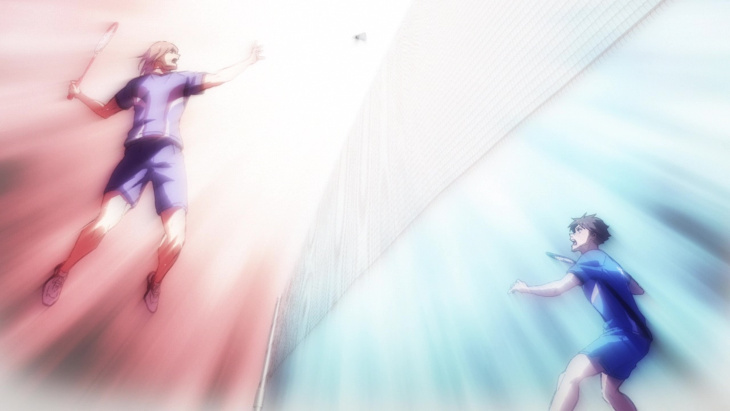
“Talent, hard work, and luck, and more than anything, rising on the updraft takes great determination. Only the most determined can seize the wind.”
Love All Play was one of the most disappointing premieres I watched during the spring anime season. It certainly wasn’t the worst of the season (That was the season that gave us Skeleton Knight), but it utterly failed to capitalize on its strengths and began with what was probably the worst episode of the whole show, as it rushed to cover what could easily account for several episodes worth of narrative. I’m pleased to say that while many of those issues persisted, their presence was never as pronounced or detrimental as they were in the first episode. If I were to award Love All Play with an award this season, it would probably be the award for “Most Improvement,” given the frustration I expressed in my First Impressions review. Once the show had rushed through a semester’s worth of content and drama in that premiere, it had the opportunity to slow down and get viewers invested in its characters. Love All Play may not be the strongest show of the season, or even the strongest sports series, but it is an enjoyable if bumpy ride.
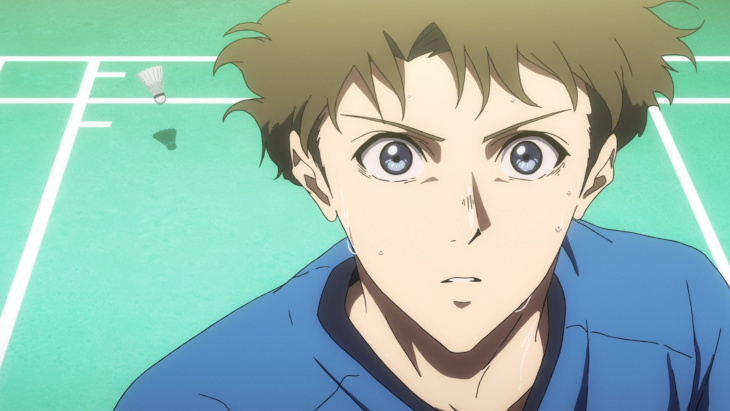
The show follows Ryo Mizushima, a badminton player who, despite a lack of confidence or a capable trainer, finds himself scouted by the high school of his athletic idol, Kento Yusa. However, to thrive in his new competitive environment, he must grow as a student, player and person. I noted on Twitter that Love All Play came across as a distorted reflection of Ao Ashi. Both shows follow leads who are defined by their well developed spatial awareness, and who are scouted by talented coaches who can see the potential hidden within their play styles. What sets them apart is that, where Ao Ashi takes about 4 episodes to establish the preliminary details by employing deliberate pacing while keeping the viewer engaged with sprinklings of sports action, Love All Play throws all of that at the viewer in the first episode, which provides no opportunity to get acquainted with the characters or become engaged in their struggles. Once the show stops operating with the pacing of a clip show, the audience can finally relate to and become invested in Mizushima’s personal struggles and his relationship with his teammates, which is good because they’re a fun and eclectic bunch. From the hot-headed and enthusiastic Sakaki, to the aloof and above-all-this Matsuda, to the quirky Higashiyama twins, there are a bunch of strong personalities for Mizushima to work off of and learn to grow from. That’s great, because Mizushima is a wet blanket at the beginning. He improves along the way, but there remain sizable stretches where he is the least interesting character.
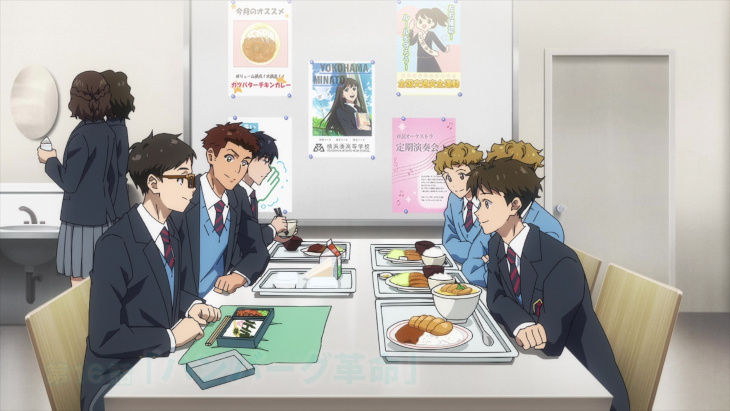
While the show improves its pacing and handling of the narrative by a significant margin, there are still points along the way where it trips up or falls flat. This happens most often during tournaments, as the series is only willing to devote time to one or two matches. Plenty of sports series suffer from an overemphasis on tournaments, and can spend entire seasons on the events of just a few games. That being said, the opposite end of the spectrum has the potential to be even worse, as the characters’ progression through the bracket becomes muddled, and it can be difficult to keep track of who is even coming out ahead. This was most prominent when the school’s club would have matches among themselves to determine who would be their representatives during the coming games. There were a few instances where I had to go back and make sure I hadn’t skipped an episode, because with the weeklong breaks between them, I was having trouble keeping track of what was happening. This inconsistent rhythm causes the show to fluctuate between a solid coming of age sports story and a cheesy, overwrought mess, as it tries to speed through the emotional conclusions of story arcs without offering those consequences time to breathe. Again, none of this makes the show bad or even prevents it from being good, but it isn’t hard to envision how the story may have flourished with another cour to work with.
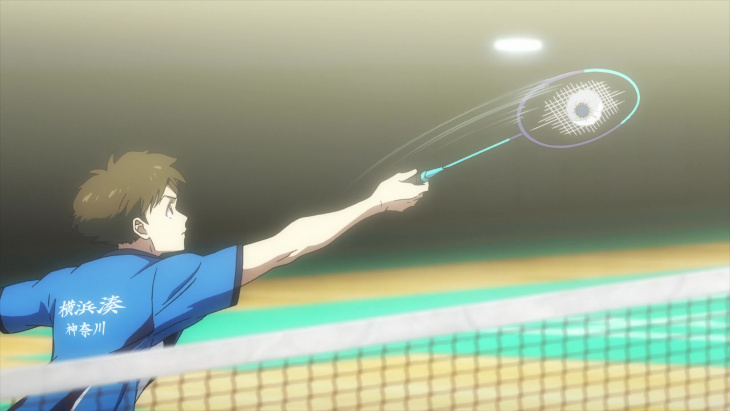
In my review of the first episode, I questioned whether the odd progression of the story may be tied to the source material being a series of novels, rather than a manga. It is reminiscent of the issues that plagued 2.43: Seiin High School Boys Volleyball, which was also a sports series adapted from novels. I can’t imagine a novel could reasonably afford to spend the same time a manga or anime would spend on a single game. Without the aid of visuals, it would be an uphill battle, so even if it was willing to invest that same percentage of its narrative to such encounters, it seems unlikely that it would be feasible to keep it engaging. The challenges of conveying the same plot to a visual medium while expanding on the sports-element itself could explain some of these problems, but this is all speculation on my part, given that I haven’t read the work. On the visual side of things, the production holds together well enough in the first half, but as the show goes on, it isn’t hard to spot animation shortcuts as the studios were forced to cut a few corners. This isn’t to an outrageous extent, but it is noticeable, particularly since Ao Ashi was airing right alongside it for two seasons. It would take an army of magic lamps to turn that comparison towards Love All Play’s favor. The animation isn’t poor, simply rough around the edges at points, and none of the primary cast goes off model, though the members of the secondary cast are a bit interchangeable both visually and in terms of characterization. That occasional drop in crispness or quality of movement was probably a calculated measure to allow for some sakuga moments in the final matches, and those do look good. Given that Nippon Animation hasn’t had a significant presence in seasonal anime for a while, I’d say that Love All Play has been a good showing for them, though it’s hard to judge the extent to which OLM’s involvement made that possible.
Before I wrap up, a few Notes and Nitpicks:
- The show has an epilogue that plays at the end, but without spoiling anything, I found it oddly unsatisfying. Much of that epilogue seemed to be spent confirming that little had changed in the character relationships and dynamics since the events of the main story wrapped up. It wasn’t as irritating as Yurei Deco’s epilogue, but it left me feeling unfulfilled.
- As I think back on the show, it occurs to me that each character’s story arc went slightly too far and resulted in a cheesy conclusion. They subtly miss the mark and go from emotionally resonating to trite in the blink of an eye.
- I didn’t hate the way the show ended, but it did irk me when it chose to cut away from the climactic match simply to build suspense. The episode was structured in a non-linear fashion purely to lend tension. This might have aggravated me more, if, once again, Yurei Deco hadn’t done the same thing but worse.

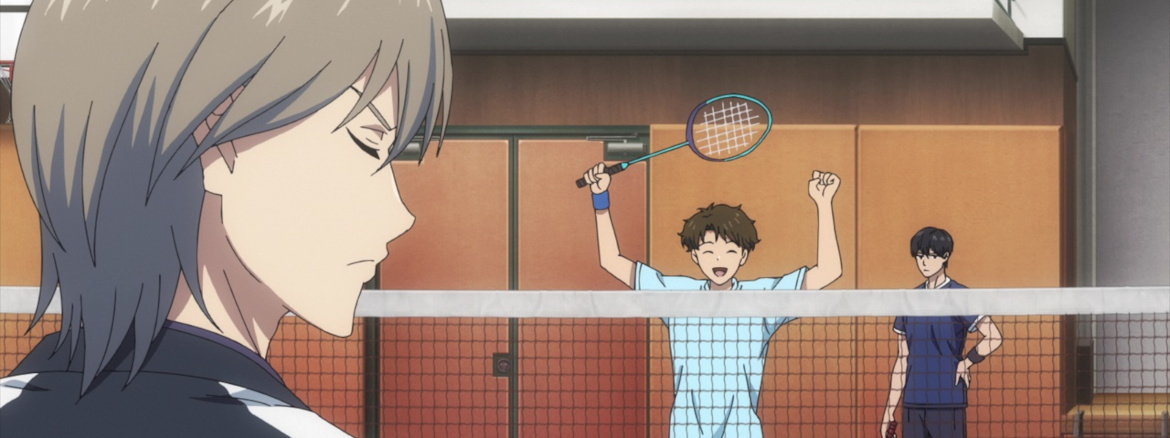


Add comment